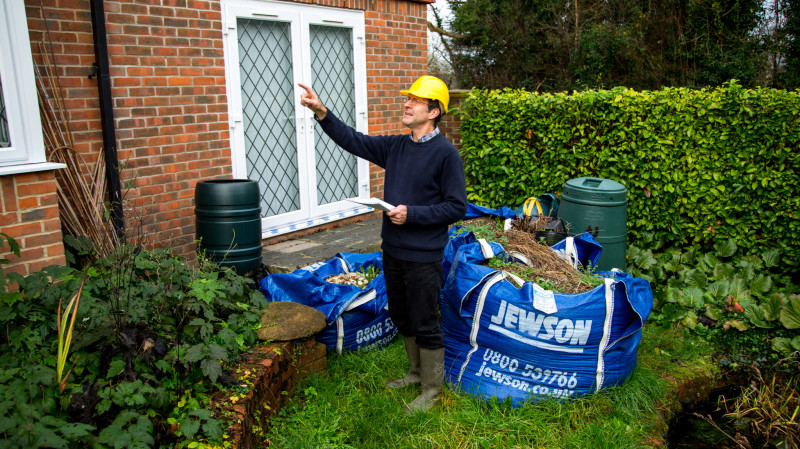You are here: How to build your dream extension
There are several different ways to build your home extension, so which one is right for you?
The question of how to approach your building project is a crucial one and requires serious thought. There are several different routes, each with their own pros and cons. The traditional way is to hire an architect first and then go out to tender to find a building contractor. Alternatively, you can opt for a design and build company that combines the two. Or, you could take on the role of project manager and hire subcontractors.

Option one: Design and Build
While some design-build contractors specialise, for example in loft conversions, others can work on any home extension project whether it’s rear, side return or wraparound. Most promise a tailor-made service from planning and design stage through to completion on site. Check if RIBA-chartered architects will design your project to deliver truly individual results as opposed to standard, builder solutions.
Typically, the firm will arrange an on-site visit to understand your ideas and get a feel of the space to extend your home. If you choose this option, they should be able to handle all the key stages – feasibility study, planning application, architectural drawings, Building Regulations and interior design.
A design-build company may also organise a party wall surveyor and structural engineer as well as manage the build on site. Basically, the firm handles all key issues once you have agreed the final design.
This option can be ideal for the time-poor. You will only have one contact to deal with and there should be minimal hassle for you. A close relationship between the designer and builder, should ensure your extension is built on time and to budget. But it comes at a price: this is the most expensive way to build. It cuts out the competitive tender process and requires a high degree of trust. Clearly, the success of this option relies on the quality of design-build contractor and professionals involved. Look at their previous work, check their credentials and ideally speak to past clients.
Option two: Main contractor
The most popular route for home-extenders is to hire a main contractor who costs the project based on the plans you have had drawn up. A building contractor (often referred to as the builder) organises all the construction for a fixed, pre-agreed price. This includes clearing the site, managing all the labour, ordering materials, calling in the trades in the right order, speaking with building control inspectors and being responsible for health and safety on site. The contractor will add his fees, around 10 to 15 per cent extra, for managing the project on top of labour and materials.
A key advantage of hiring a contractor, is having an insured builder in charge of all aspects of the construction. You have one point of contact with the builder, not the individual trades who will be working on your home. Plus, you’ll be able to tap into the builder’s experience of past projects and trade discounts.
On the downside, contractors often juggle several jobs to keep the money coming in, leaving you at mercy of their timelines. Ask for a written schedule of works, so you know what is happening and when. Using a contractor will require you to be actively involved to ensure the detailed design is followed as builders often have their own way of doing things. Defects can arise if builders fail to follow the architect’s drawings.
The success of this route hinges on finding a good builder who can complete the project on time and on budget. Obviously, a personal recommendation helps and it’s wise to talk to previous clients.
Option three: Managing your own project
In this scenario, you take on the role of main contractor, so you’re the one responsible for organising all building work. This means providing materials on site in the quantities required, scheduling tradespeople, hiring diggers, scaffolding and skips. As general contractor, you will also be responsible for health and safety on site.
The most obvious benefit is cost. You can save significant sums in contractor fees. Plus, it can be hugely satisfying learning new skills and you’ll have complete control of the project. When it is finished, you’ll enjoy a feeling of accomplishment.
But before you go out and buy your own hard hat, there are some negatives to consider too. The time commitment alone is huge as you will need to be available during the day to answer queries, make decisions and organise the logistics of the site. The build is likely to take longer than with a main contractor. You’ll be negotiating prices with builders’ merchants but unlikely to get the big discounts available to trade customers.
Contractors have a network of skilled electricians, plumbers and plasterers they can call on at the drop of a hat whereas it can be tricky to find good tradespeople as a layperson. If you’re not directly involved with construction, do you have the skills to oversee and ensure all tasks are performed correctly?
Option four: Work with an architect
There is also the option of hiring a fully qualified architect to manage your whole project from concept to completion on site. The services provided by a local architect aren’t limited to developing the design, preparing technical drawings and a schedule of works that can be used to price the tender. An architect can also administer your contract with the builder, carry out regular inspections on site, deal with queries, instruct any additional work required, keep track of costs and certify payments to the builder. Generally, architects begin to offer a full service for projects with a budget of £30,000 or more, according to the Royal British Institute of Architects (RIBA). But for a smaller fee an architect can help you to figure out how to get the best out of your project regardless of whether they are needed for later stages.
The pros of investing in an architect are many. They can act as a design guardian who vets the craftsmanship and ensures high quality is maintained throughout. Choosing an accredited RIBA Chartered Practice should give peace of mind. They comply with strict criteria covering insurance, health and safety and quality management systems.
On the downside, hiring an architect can be expensive. Fees will vary depending on the size of the project and level of service provided. Some will charge between 8% and 12% of the total build cost, others a fixed price or time charge basis. If you opt for this route, you and your architect should discuss and agree in writing the scope and cost of architectural services before any works starts.
So, how do you decide the right route for you? All four are valid options to build your dream extension. But ask yourself, do you have the time, skills and aptitude to run a building project? Or are you willing to pay more for professionals to reduce your risk, stress levels and get a better result? Honestly answering these questions should help you decide how best to stop dreaming and start building.
If you are looking to make some home improvements, you may find some of these services useful
Builders
Find local help with a building project
Building Regulations
Find details of local experts who can help with Building Regulations
Architectural Design Services
Find local Architectural Design experts
Structural Inspections
Find an expert to carry out a structural inspection
Building Surveys
I want a local surveyor to do a Building Survey for me
Choose which Architectural service you require
If you are not sure which service you require, check out the options available...


